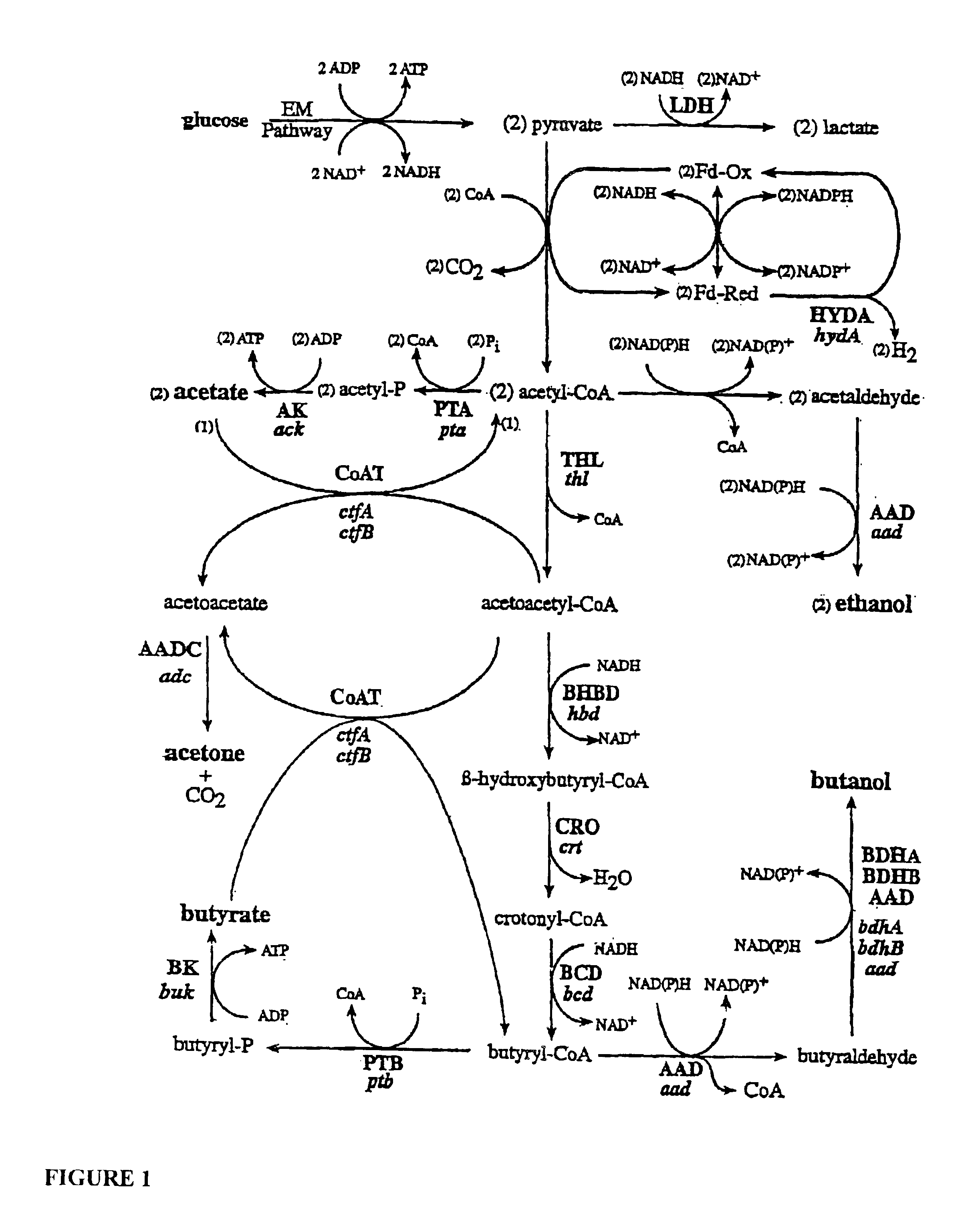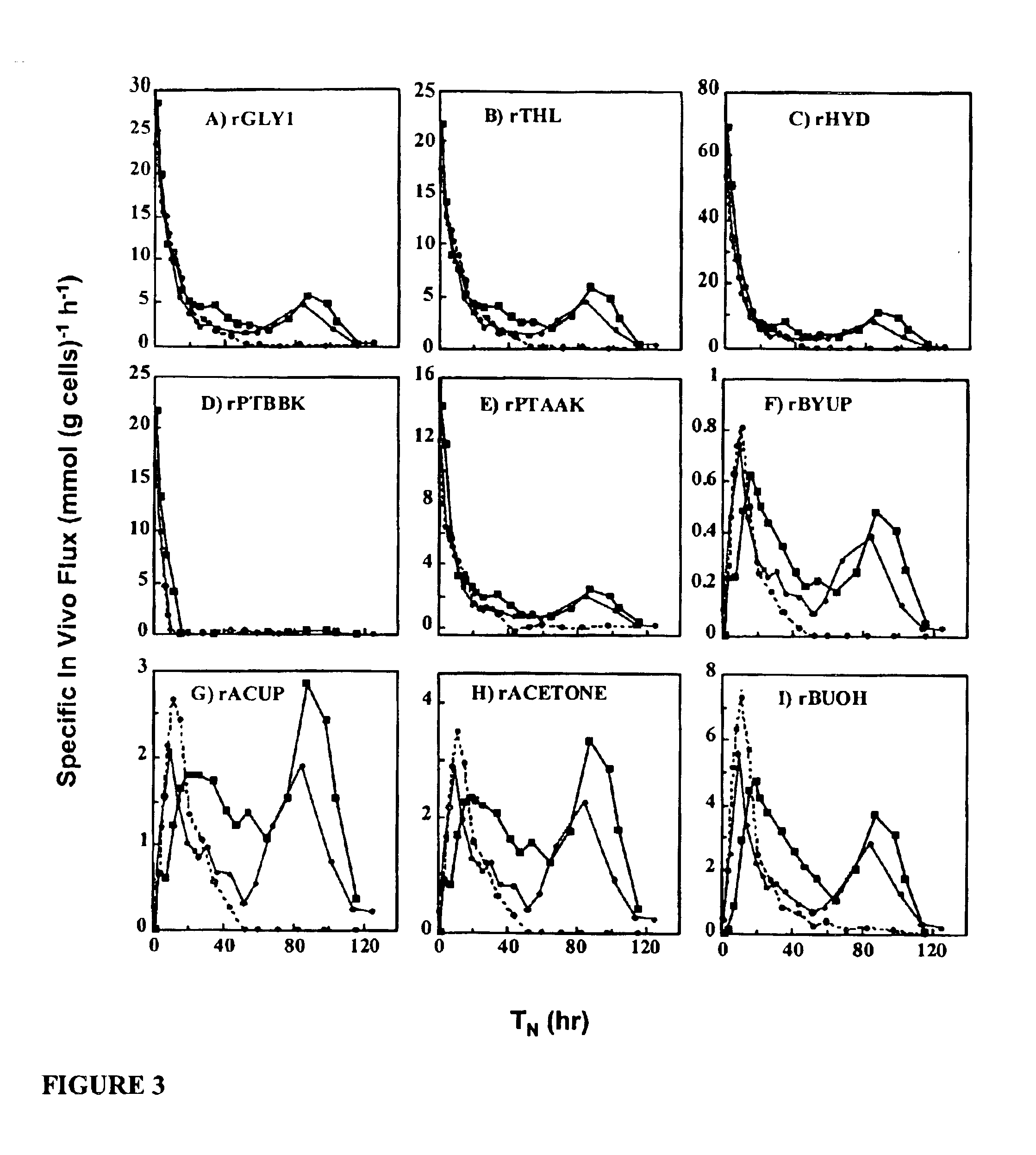Increased cell resistance to toxic organic substances
a technology of organic substances and cell resistance, applied in the field of increased cell resistance to toxic organic substances, can solve the problems of affecting production, bio-production processes, and toxic effects of many desired substrates, products and/or byproducts, and achieve the effects of increasing tolerance, enhancing the effectiveness of bioremediation or biocatalytic process, and increasing tolerance to corresponding toxic substances
- Summary
- Abstract
- Description
- Claims
- Application Information
AI Technical Summary
Benefits of technology
Problems solved by technology
Method used
Image
Examples
example 1
[0180]The following illustrates a representative construction of a cell, in accordance with this invention, having increased resistance to toxic organic molecules, namely butanol. A plasmid (pSR1) is constructed using common methods known by those skilled in the art containing the groE operon of C. acetobutylicum under the control of its own natural promoter. pSR1 was electrotransformed into strain ATCC 824. After verifying plasmid integrity in this strain, a series of fermentations with strain 824(pSR1) and its respective control strain 824(pIMP1) were carried out. Plasmid pIMP1, a plasmid naturally occurring in C. acetobutylicum ATCC 824, is the backbone plasmid into which the groE operon was inserted. Strain 824(pSR1) exhibited a prolonged solvent formation stage, reduced cell lysis and reached a butanol titer of 227 mM (16.8 g / l) against a titer of 175 mM (13 g / l) for the control strain 824(pIMP1).
example 2
[0181]The following illustrates another aspect of this invention, the elevated expression of solvent tolerant genes to increase cell resistance to toxic organic compounds. A gene (solR), identified upstream of aad was found to encode a repressor of the sol locus (aad, ctfA, ctfB, and adc) genes (located on the large pSOL1 plasmid) for butanol and acetone formation in strain ATCC 824. Overexpression of solR in 824 (pCO1) resulted in a solvent-negative phenotype due to its deleterious effect on the transcription of the sol locus genes. Inactivation of solR via homologous recombination yielded strains B and H, which exhibited deregulated solvent production characterized by increased yields and fluxes towards butanol and acetone formation, earlier induction of aad, and lower overall acid production as compared to the wild-type strain. Strains B and H were characterized by Southern and PCR analysis to confirm the recombination events and in controlled pH fermentations for product formati...
example 3a
GroESL Overexpressing Strain
[0183]A recombinant C. acetobutylicum strain carrying a plasmid constructed to overexpress the groESL operon genes (groES and groEL) under control of the clostridial thiolase promoter was created. The groESL operon genes were PCR amplified from the chromosome using primers designed to exclude the operons natural promoter and associated regulatory element. (The regulatory element, termed CIRCE (Controlling Inverted Repeat of Chaperone Expression), controls expression of the groESL operon through interaction with a putative regulatory protein orfA. OrfA is the first gene in the dnaKJ operon, the other major member of the chaperone familiy. The CIRCE element was omitted to liberate expression of the groES and groEL genes on the plasmid from control of the orfA protein produced from the chromosomal copy of the orfA gene.) The groESL operon genes were inserted into the C. acetobutylicum / E. coli shuttle vector pSOS95del. The shuttle vector was created by removi...
PUM
| Property | Measurement | Unit |
|---|---|---|
| Molar density | aaaaa | aaaaa |
| Molar density | aaaaa | aaaaa |
| Molar density | aaaaa | aaaaa |
Abstract
Description
Claims
Application Information
 Login to View More
Login to View More - R&D
- Intellectual Property
- Life Sciences
- Materials
- Tech Scout
- Unparalleled Data Quality
- Higher Quality Content
- 60% Fewer Hallucinations
Browse by: Latest US Patents, China's latest patents, Technical Efficacy Thesaurus, Application Domain, Technology Topic, Popular Technical Reports.
© 2025 PatSnap. All rights reserved.Legal|Privacy policy|Modern Slavery Act Transparency Statement|Sitemap|About US| Contact US: help@patsnap.com



